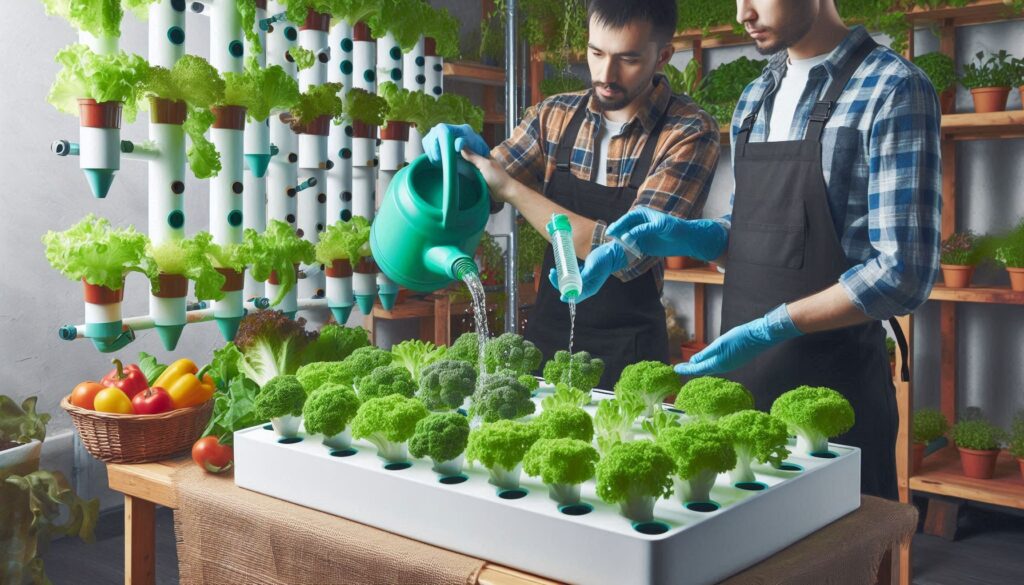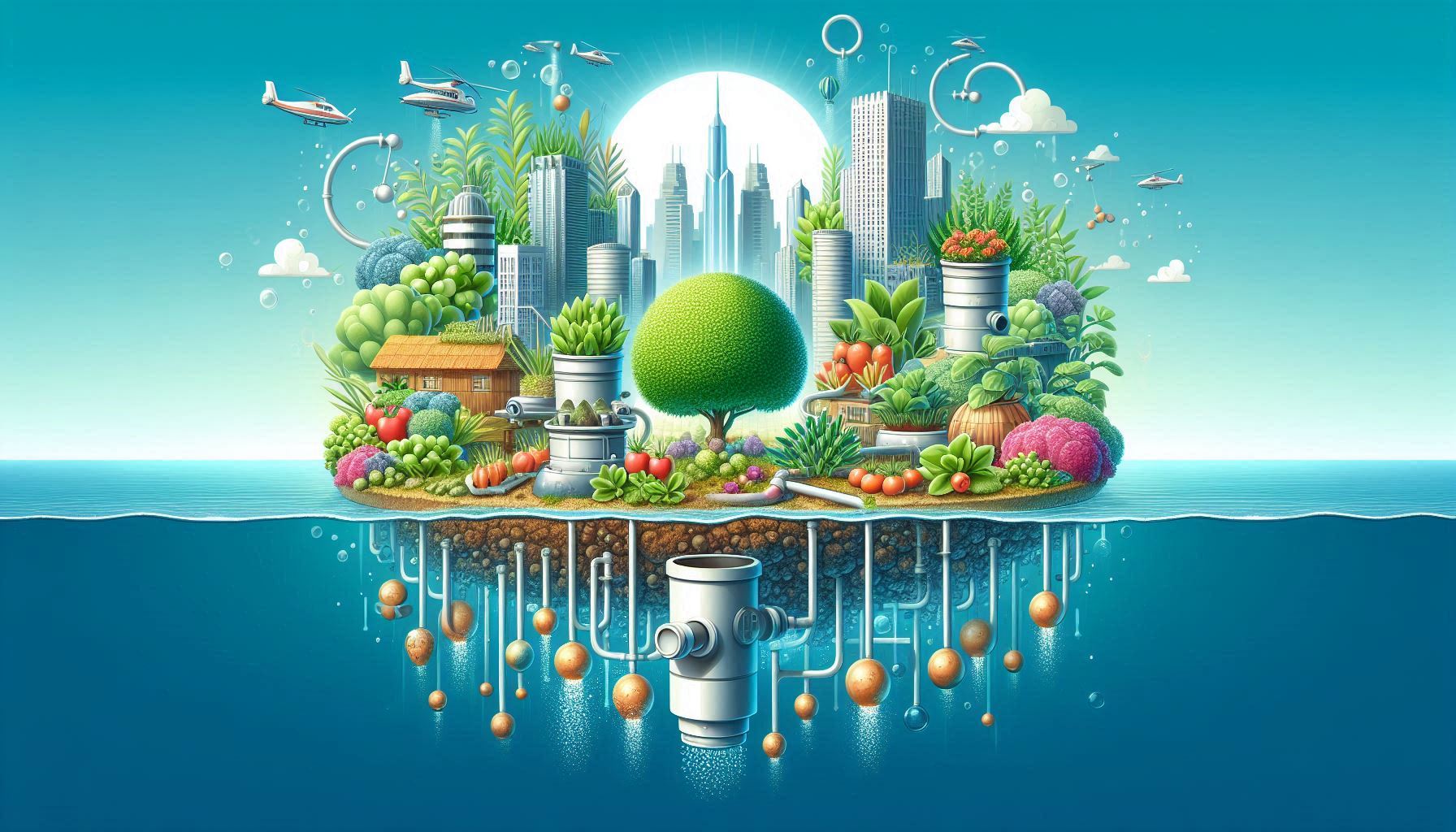Hydroponic gardening is a modern and innovative method of cultivating plants without the use of soil. Instead, plants are grown in a nutrient-rich water solution, providing them with all the essential nutrients they need for healthy growth. This method of gardening has gained popularity in recent years due to its numerous benefits, including efficient use of resources, faster plant growth, and the ability to grow plants in limited spaces. In this comprehensive guide, we will delve into the world of hydroponic gardening, exploring what it is, how it works, and the different types of systems used.
What is Hydroponic Gardening?
Hydroponic gardening, also known as soilless gardening, is a method of growing plants in a nutrient-rich water solution without the use of traditional soil. Instead of soil, plants are supported by an inert medium such as perlite, vermiculite, coconut coir, or rockwool, which helps anchor the plant’s roots and provides support. The nutrients essential for plant growth are dissolved in water and delivered directly to the plant’s roots, eliminating the need for plants to search for nutrients in the soil.
How Does Hydroponic Gardening Work?

In traditional soil-based gardening, plants rely on the soil to provide them with essential nutrients, water, and oxygen. In hydroponic gardening, these elements are delivered directly to the plant’s roots through a nutrient solution, creating a controlled and optimized environment for plant growth. The basic principles of hydroponic gardening include:
- Nutrient Solution: Plants in a hydroponic system receive all the essential nutrients they need through a nutrient solution made up of water and specific plant nutrients such as nitrogen, phosphorus, potassium, calcium, magnesium, and trace minerals. The nutrient solution is carefully balanced to meet the plant’s requirements at different stages of growth.
- Root Support: In hydroponic gardening, plants are typically grown in an inert medium that provides support and stability for the plants’ roots. This medium also helps ensure adequate oxygen levels reach the roots, promoting healthy root growth and nutrient uptake.
- Oxygenation: Oxygen is vital for healthy root growth and nutrient absorption in plants. In hydroponic systems, oxygen is supplied to the roots through the water or through air pumps and air stones that create aeration in the nutrient solution. Proper oxygen levels are essential for preventing root rot and promoting vigorous plant growth.
Types of Hydroponic Systems:
There are several different types of hydroponic systems, each with its unique characteristics and advantages. Some of the most common hydroponic systems include:
- Deep Water Culture (DWC): In a DWC system, plants are placed in a container filled with a nutrient solution, and their roots are submerged in the solution. Oxygen is supplied to the roots through air pumps and air stones, creating a highly oxygenated environment for plants to thrive.
- Nutrient Film Technique (NFT): In an NFT system, a thin film of nutrient solution flows along the bottom of a channel, and plants’ roots are exposed to the nutrient solution as it passes by. This continuous flow of nutrients provides plants with a steady supply of water and nutrients, promoting rapid growth.
- Ebb and Flow (Flood and Drain): Ebb and flow systems consist of trays or containers that are flooded with a nutrient solution at regular intervals, allowing the plants’ roots to absorb the nutrients. The excess solution then drains back into a reservoir, providing aeration to the roots.
- Aeroponics: In aeroponic systems, plants are grown in a mist or fog environment, with their roots suspended in the air. Nutrient-rich water is sprayed directly onto the roots, creating a highly oxygenated and efficient system for nutrient absorption.
Benefits of Hydroponic Gardening:
Hydroponic gardening offers several benefits over traditional soil-based gardening, making it an attractive option for home gardeners, commercial growers, and urban farmers. Some of the key benefits of hydroponic gardening include:
- Efficient Use of Resources: Hydroponic systems use less water compared to traditional gardening methods since water is recirculated and reused within the system. Nutrients are delivered directly to the plants’ roots, reducing waste and promoting efficient nutrient uptake.
- Faster Plant Growth: Plants grown in hydroponic systems often grow faster and produce higher yields compared to soil-grown plants. The controlled environment in hydroponic systems allows for optimal nutrient absorption, leading to accelerated growth rates and healthier plants.
- Space Saving: Hydroponic systems are ideal for growing plants in limited spaces, such as urban environments, indoor spaces, or areas with poor soil quality. Vertical hydroponic systems, in particular, maximize vertical space and allow for the cultivation of a wide variety of plants in a small footprint.
- Reduced Pests and Diseases: Since hydroponic systems eliminate the need for soil, they are less susceptible to soil-borne pests and diseases that can affect traditional gardens. This reduces the need for chemical pesticides and fungicides, promoting healthier and more sustainable plant growth.
Hydroponic gardening offers a versatile and sustainable way to grow plants without the use of soil, providing numerous benefits for both home gardeners and commercial growers. By understanding the basic principles of hydroponic gardening, the different types of systems available, and the benefits it offers, you can explore the world of soilless cultivation and enjoy the rewards of healthy plants and bountiful harvests. Whether you are a beginner looking to start your hydroponic garden or an experienced grower seeking to expand your knowledge, hydroponic gardening presents endless possibilities for cultivating a wide variety of plants in a controlled and efficient growing environment.

